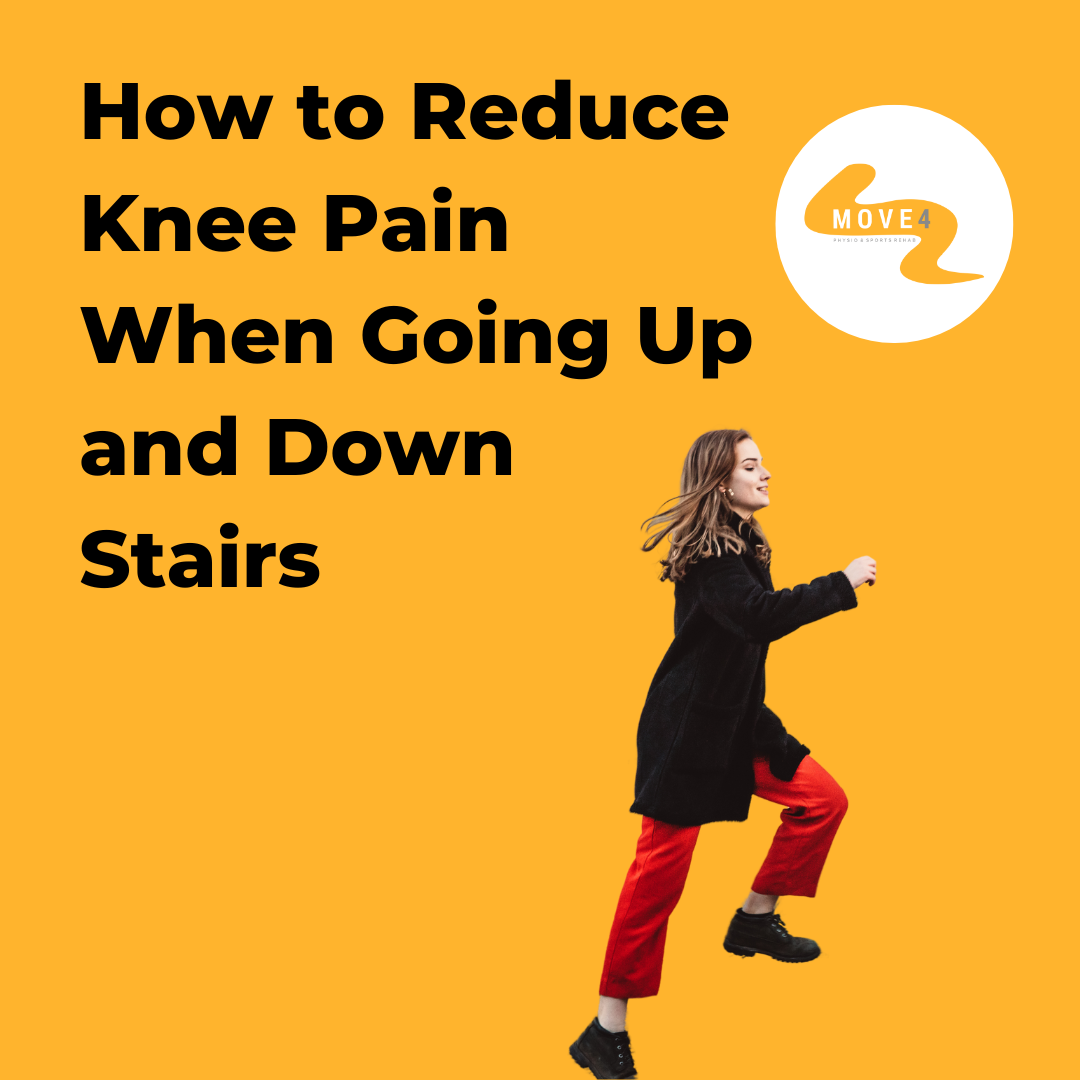
If you experience knee pain when using the stairs, you’re not alone. Many people struggle with discomfort when going up or down steps, often feeling pain around the patellofemoral joint (the area where your kneecap meets your thigh bone). This can make everyday tasks frustrating and limit your mobility.
The good news? There are immediate changes you can make to help reduce pain while using stairs. But remember, while these strategies can help you function in the short term, if you’re struggling with ongoing knee pain, it’s always best to seek a physiotherapy assessment to address the root cause of the issue.
When we ascend or descend stairs, we place significant loads through the patellofemoral joint. The key factor contributing to knee pain in this movement is the angle of the shin, or how far the knee moves over the toes. This increases the pressure on the front of the knee, particularly on the underside of the kneecap, leading to discomfort in those with existing irritation or sensitivity in this area.
However, movement can be modified to offload this area and shift the work elsewhere, helping to reduce pain and allow you to function more easily.
When climbing stairs, the more your knee moves over your toes, the greater the load through the patellofemoral joint. While this isn’t a bad movement in a healthy knee, if you’re experiencing pain, reducing this forward knee angle can temporarily ease discomfort.
Instead of driving your knee forward as you step up or down, try leaning slightly forward at the hips and focusing on engaging the muscles around the hips and glutes. This technique helps to shift the workload from the knee to the larger, stronger muscles of the hip and thigh, reducing stress on the painful joint.
Here’s how to adjust your movement:
This change in movement reduces compression at the knee and can make stairs more manageable in the short term.
If pain is severe, consider using a handrail to offload some of the weight. This reduces the force going through the knee and allows you to use your arms to assist the movement.
While these adjustments can help reduce pain when navigating stairs, they don’t fix the underlying issue. Pain is a signal that something isn’t working optimally, and without addressing the cause, the discomfort could persist or worsen over time.
Some common reasons for knee pain on stairs include:
If knee pain is affecting your ability to go up and down stairs, it’s important to seek a physiotherapy assessment. A physiotherapist can help identify the root cause of your pain and create a tailored rehabilitation plan to improve strength, mobility, and function in the long term.
To improve knee function and reduce pain in the long term, exercises targeting the hip, thigh, and core muscles can be extremely beneficial. Strengthening these muscle groups can help improve stability and ensure better load distribution through the knee joint when using stairs.
Key muscle groups to focus on include:
A physiotherapist can tailor a strengthening program to your specific needs, ensuring exercises are safe and effective for your condition.
If knee pain is interfering with your ability to use stairs comfortably, don’t ignore it. While adjusting your movement can help in the short term, long-term solutions require addressing the underlying cause.
A physiotherapy assessment will help you regain confidence in your movement and ensure you stay active without pain.
If you’re struggling with knee pain, get in touch with Move4 Physio today. Our team can assess your movement and provide a clear plan to help you move pain-free.